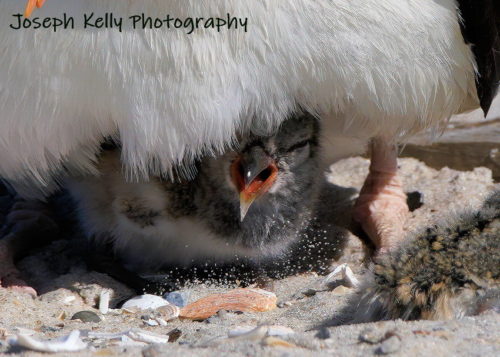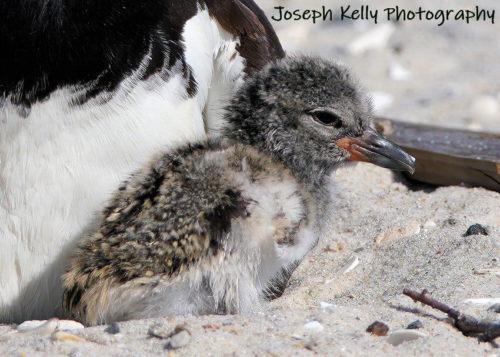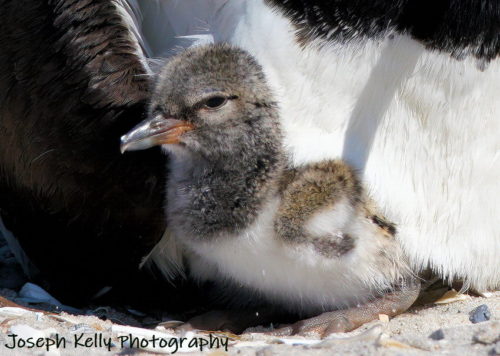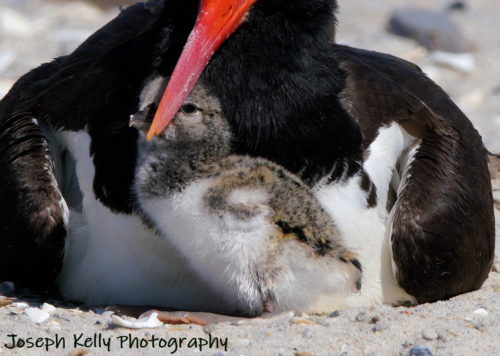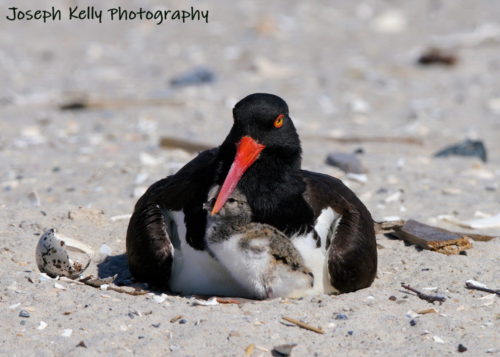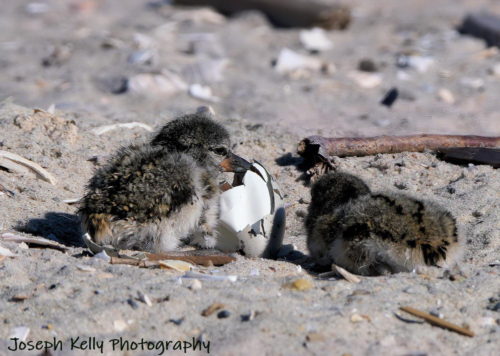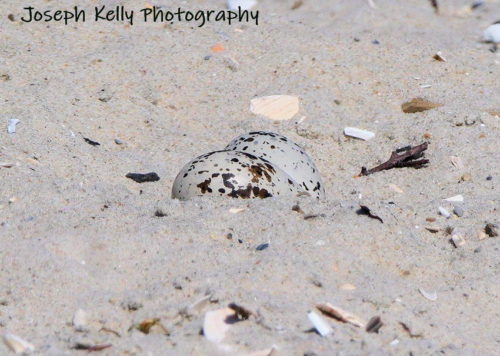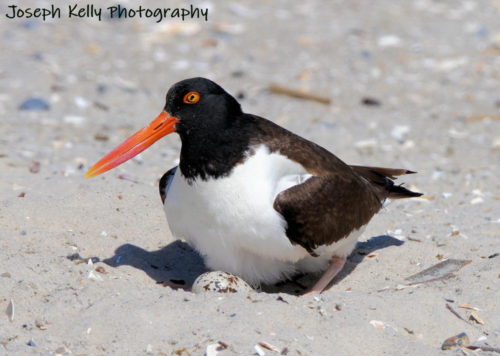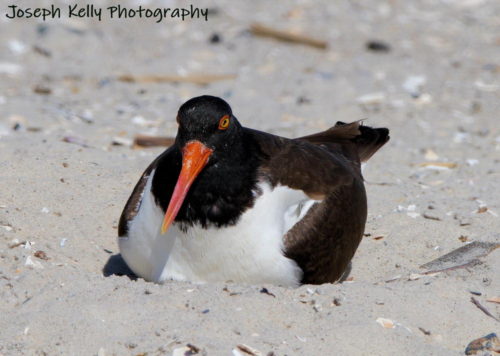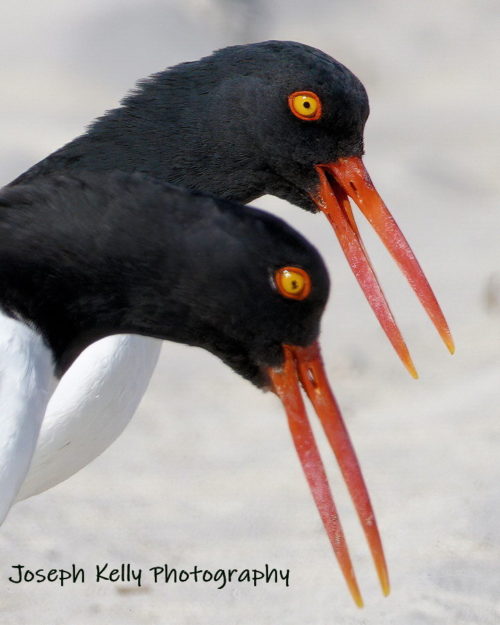Wednesday, June 17, 2020,
Okay, so here’s some major coolness. Well, at the very least, it’s pretty cool to me. I will attempt to express some of my awe and wonder in these few paragraphs. These photographs capture two baby Oystercatcher chicks on their very first day. These chicks are literally only a few hours old. Each one still has its egg tooth. The egg tooth is that small white nubbin near the end of their upper bills.
The beak and claws of most bird chicks growing inside of an egg are often undeveloped and therefore not strong enough to allow the chick to break out of the egg when it is ready to meet the world. Nature has provided a solution to this dilemma. A hard, sharp protrusion develops near the tip of the upper beak of the embryonic chick. This is the “egg tooth” and it is used by the emerging chick to break free of its eggshell. Many reptiles and amphibians use a similar strategy.
Having been an amateur naturalist since the age of five, I have been aware of the concept of an egg tooth for decades. These photos mark the very first time I have ever seen, let alone photographed, an actual egg tooth. How cool is that? This remarkable structure, no longer needed, will drop off after a few days. JK
JK

